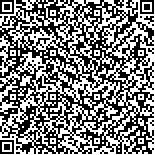胡楠,毕胜,卢茜,邓思宇,郄淑燕,刘畅,张佳玮.脑卒中偏瘫足内翻患者步行支撑期的足底压力特征[J].中华物理医学与康复杂志,2015,37(9):668-673
扫码阅读全文

|
| 脑卒中偏瘫足内翻患者步行支撑期的足底压力特征 |
|
| |
| DOI: |
| 中文关键词: 脑卒中 偏瘫 足底压力 足内翻 |
| 英文关键词: Hemiplegia Stroke Plantar pressure Inversion Gait |
| 基金项目: |
|
| 摘要点击次数: 2187 |
| 全文下载次数: 3015 |
| 中文摘要: |
| 目的 探讨可描述脑卒中偏瘫患者步行支撑期足内翻的足底压力学参数。 方法 选取能独立步行的脑卒中偏瘫患者22例设为病例组,另选与患者年龄、体重相匹配的中老年健康志愿者17例设为对照组,使用Footscan压力板测量受试者常速行走下的足底压力,采集双足各3次的动态足底压力,得到足内外侧压强比值,记录并分析患者行走时足底各区域的压强峰值和接触面积(本研究所呈现的数据均为某个区域参数相对于所有分区对应参数之和的百分比)。并使用临床痉挛指数(CSI)评价患者患侧踝关节的痉挛程度,并比较对照组健康人与病例组患者健患侧之间上述参数的差异及其相关性。 结果 ①病例组患侧前足内侧压强占所有分区之和的百分比[(23.52±10.15)%]小于对照组优势侧[(29.82±7.45)%],而前足外侧压强的百分比[(45.45±17.71)%]大于对照组优势侧[(37.47±12.60)%];病例组健侧第1趾压强的所占百分比[(9.04±7.47)%]小于对照组优势侧[(14.84±6.54)%],而病例组中足及足跟压强的所占百分比[患侧(38.17±13.57)%,健侧(49.61±26.36)%]均大于对照组优势侧[(25.05±4.92)%],且组间差异均有统计学意义(P<0.05);病例组患侧前足外侧压强的所占百分比[(45.45±17.71)%]大于组内患者健侧[(37.04±22.09)%],且差异有统计学意义(P<0.05)。②病例组患侧第1趾接触面积占全足的百分比[(9.96±1.67)%]大于对照组优势侧[(8.57±1.17)%],前足内侧接触面积占全足的百分比[(14.71±4.64)%]小于对照组优势侧[(17.62±1.52)%],且组间差异均有统计学意义(P<0.05);病例组其余各区域健患侧组内比较,差异无统计学意义(P>0.05)。③病例组患侧全足、前足内外侧压强比值最大值[(27.21±22.73)、(22.81±22.19)]明显小于对照组优势侧[(43.68±23.78)、(41.09±28.13)],组间差异均有统计学意义(P<0.05),而足跟的足内外侧压强比值的最大值组间比较以及健患侧之间全足、前足及足跟足内外侧压强比值的最大值比较,差异均无统计学意义(P>0.05),但有患侧小于对照组优势侧及患侧小于健侧的趋势(P>0.05)。④病例组健患侧足在支撑期翻转程度减小,整体呈内翻。⑤病例组经CSI评定有轻度痉挛13例,中度痉挛5例,重度痉挛4例。病例组患侧总体的踝关节CSI得分(10.26±3.38)分,95%可信区间位于8.63~11.89。病例组患侧全足的内外侧压强比值最大值与前足外侧压强呈中度负相关(r=-0.516,P<0.05),与接触面积及CSI无关(P>0.05)。 结论 足底压力可定量描述脑卒中偏瘫患者的足内翻,足内外侧压强比值的最大值是反映脑卒中偏瘫患者足内翻的有效指标。 |
| 英文摘要: |
| Objective To find the plantar pressure readings which best indicate foot inversion during the stance phase of walking among hemiplegic stroke survivors. Methods Twenty-two hemiplegic stroke survivors who were able to walk without extra aid were recruited as the experimental group, while 17 healthy elderly men of similar age and body weight were selected as the control group. Those in both groups were asked to walk at their preferred speed over a Footscan device which measured medio-lateral pressure ratios, maximum plantar pressures and the contact areas of both feet. The Clinical Spasticity Index (CSI) was used to evaluate the affected feet. Results The average medial forefoot pressure of the affected side in the experimental group was significantly lower than that of the control group, but their average mesopodium and heel pressure was significantly higher. The average pressure applied by the great toe on the uninjured side in the experimental group was significantly smaller than that of the control group, but the average mesopodium and heel pressure of both feet among the hemiplegics were significantly higher than those of the control group. Among the experimental group, the average medial forefoot pressure of the affected foot was significantly greater than that of the healthy foot. The average contact area of the great toe on the affected side was significantly bigger than was observed in the control group. That of the medial forefoot was, however, significantly smaller than in the control group. There was no significant difference in the contact area between the healthy and affected feet in the experimental group, though the maxmium medio-lateral pressure ratios of their full feet and forefeet on the affected side were significantly lower than those in the healthy group. No significant differences in the maxmium medio-lateral pressure ratios of the heel were observed between the two groups, nor of the full feet, forefeet and heels of the affected and unaffected sides in the experimental group. The patients demonstrated consistently reduced joint mobility on both sides during the stance phase, coinciding with increased inversion. A significant negative correlation was found between the maxmium medio-lateral pressure ratios of the full foot and the maximum pressure of the lateral part of forefoot in the experimental group, but there was no significant correlation with contact area or CSI. Conclusions Plantar pressure data can be used to describe the amount of foot inversion in the stance phase of walking with hemiplegic patients after stroke. The maxmium medio-lateral pressure ratios can effectively reflect their foot inversion. |
|
查看全文
查看/发表评论 下载PDF阅读器 |
| 关闭 |
|
|
|